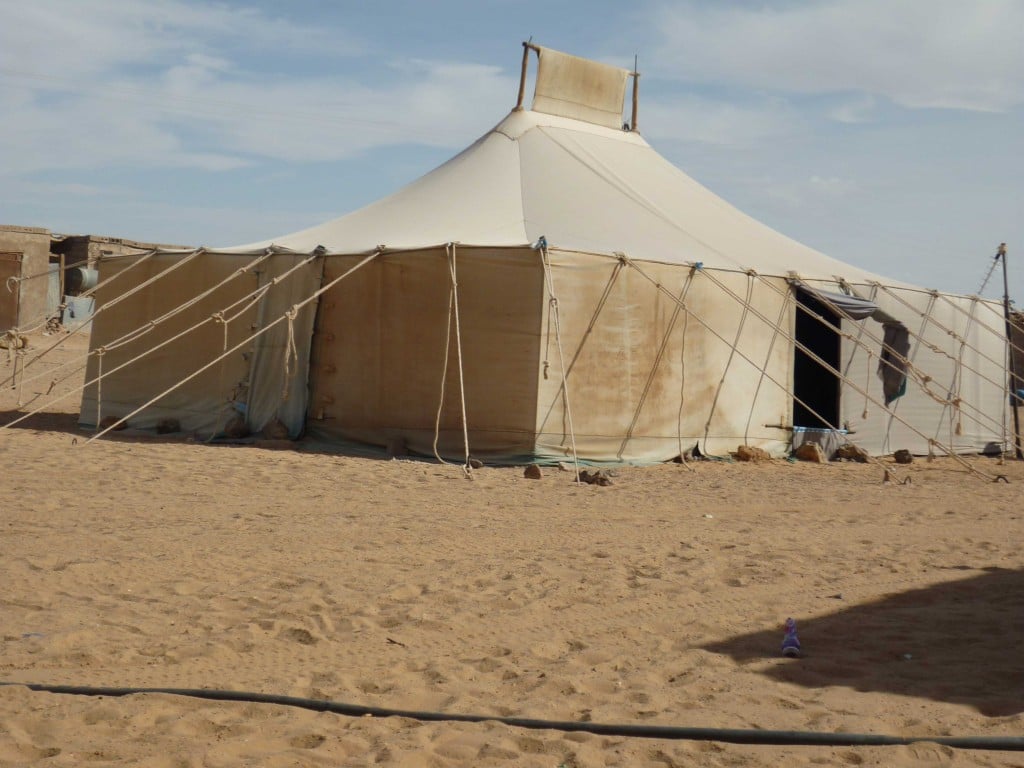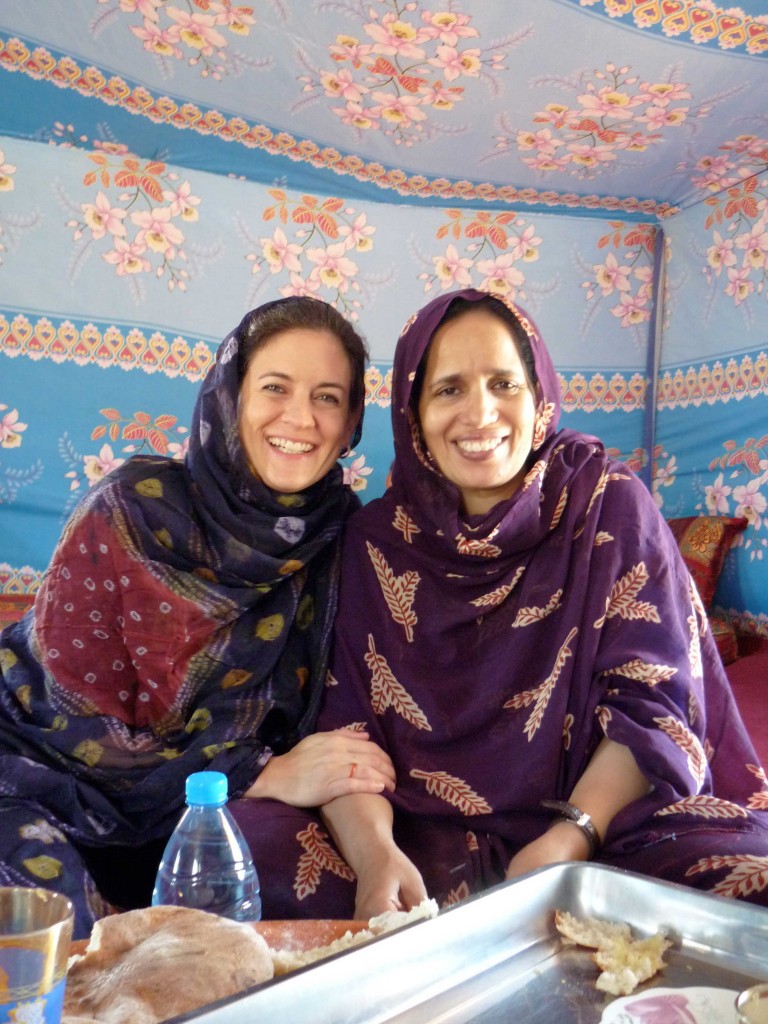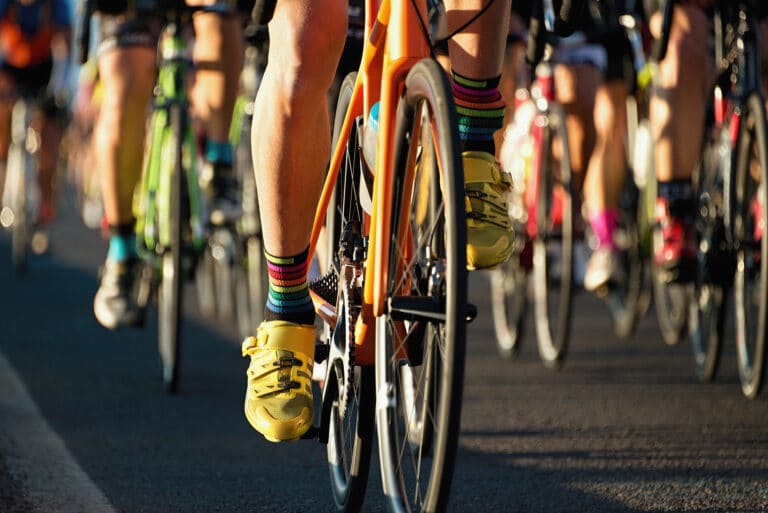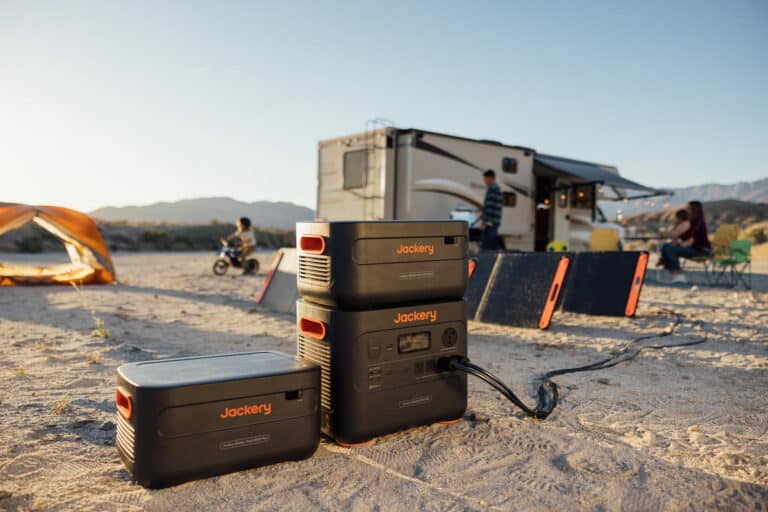The temperature in the Sahara Desert was over 130 degrees the first time I went to the refugee camps. Just weeks out of college, I was teaching English to Western Saharan refugees in southern Algeria. I was in the Sahara Desert, thousands of miles from home, because of a woman named Zahra. I met Zahra when I was a college student and she came to my university on a speaking tour to raise awareness about her country, Western Sahara.
Now, 22 years later, I’m going back to the refugee camps to run my first marathon. The SaharaMarathon winds its way through the refugee camps, bringing runners from around the world to raise funds and awareness for the 200,000 Western Saharan refugees who have been living in this harsh corner of the Sahara Desert for forty years.
The first question people ask me is, where is Western Sahara? Is it a country?
For such a small and unknown African country, this tends to be a complicated and detailed answer. Western Sahara, once known as Spanish Sahara, was a colony of Spain in northwest Africa. In 1975, on the eve of their independence from Spain, Western Sahara was invaded by Morocco. This military invasion sparked a war, causing Western Saharan refugees to flee into the Sahara Desert. The Western Saharan refugees, also called Saharawis, fled into Algeria while being attacked and bombed by Morocco. Those who made it to safety created an elaborate refugee camp structure and established a new government in exile in 1976, called the Saharan Arab Democratic Republic (SADR). The SADR is now recognized by over 80 UN countries worldwide.
Morocco and Western Sahara’s independence movement, the Polisario, fought a war for 16 years, then agreed to a UN brokered peace plan in 1991. The two sides agreed to a ceasefire and to hold a referendum — a vote for the Western Saharans to choose between integration with Morocco or independence. They have never been able to hold this vote. In all the years of stagnation, the hundreds of thousands of Saharawi refugees continue to live in the camps — forgotten and ignored for forty years. However, Morocco still maintains an illegal occupation in Western Sahara and controls the majority of the territory and its natural resources. In addition, Morocco built an earthen berm through the entire country, similar to a wall and second in length only to the Great Wall of China, to seal off the Western Saharan territory. The United States and France helped fund construction of the wall. Littered with an estimated 7-9 million landmines and costing Morocco $1 million a day to maintain, the wall prevents Western Saharans under Moroccan control from leaving and the refugees from returning home.
Why does this issue speak to me so deeply?
It all goes back to meeting Zahra. She told me the history I shared above and told me about her life in the refugee camps. Zahra told me that when they first fled into the desert and created the camps, they had two priorities: adult literacy and universal education for all children. Many of the elders had grown up as bedouins, following camels in the desert instead of attending schools. And the Spanish colonial government provided some education for the children, but not enough. The refugees knew from the beginning that if they wanted to build a new nation, everyone had to be educated. Zahra also explained that with the men off fighting, the women were left to organize all aspects of camp life — education, aid distribution, health care, youth activities, job training, childcare, government, etc. The women became elected officials in the government in exile and ambassadors abroad. I was totally blown away. For almost my entire life, she had been living as a refugee. And here was this African, Arab, Muslim refugee woman standing before me, erasing all steroetypes I had. She was not a powerless victim. She was a force of nature and I wanted to meet the other women in the refugee camps. I decided at that moment, that I had to go. I had to go to the refugee camps. I told Zahra, “I’ll see you there this summer.” She laughed. But eight months later, I was living in the camps with a refugee family and teaching an English class.
Over the two decades I’ve been connected to the refugees, I have witnessed so much change, yet so much stay the same. During my first visit in 1993, communication with the outside world was very hard to arrange, there were no stores or TVs, few personal cars, and luxuries were rare. I taught my English class in two segments, morning and early evening, because it was too hot during the middle of the day for anyone to be outside or doing anything remotely like work. I remember walking home from the school one afternoon, a little later than usual and I stopped by a friend’s tent. Her father was the only one who had a generator-powered refrigerator. I sat down in the shady tent for a visit and he produced a slighty cold, Algerian version of a bright orange Nehi soda. To this day, it remains the most refreshing, best tasting soda I have ever had. Today in the camps, there are cell phone towers, tiendas selling groceries and clothes, and everyone has a TV. But they are still in the camps. Technology has changed, but their struggle hasn’t.
What is the SaharaMarathon?
Fast forward over twenty years. My dearest friend in the camps, Selma, can text me now. I love it. I hear that special sound for her messages and I am transported thousands of miles to the Sahara Desert. She writes to me, asking what I am doing in American to help Western Sahara. Even after 40 years, Selma tells me via text, “We are living in hard conditions and don’t know how our lives will be in the future.” Through the marathon, I have an opportunity to help. To tell the Western Saharan story and to raise funds for Selma and her family and all the others in the camps.
The SaharaMarathon is a collection of running races (marathon, half marathon, 10K and 5K) organized by European non-profits that work on behalf of Western Sahara. Every year for the last 15 years, runners from around the world come to the refugee camps to learn about Saharawis’ struggle and to run a race they’ll never forget.
When I returned to the camps three years ago, I heard about the marathon, but put it in the back of my mind. I’m a trail runner and love to be out in the woods. I’ve done just two half marathons and never really considered doing a full one. But recently a few connections came into focus for me and I couldn’t ignore them. This year marks the 40th year of exile for the refugees. Forty years in the desert — living in tents, generations who have never seen their homeland, struggling to survive on humanitarian aid and hoping the international community will notice them and help. But nothing happens.
A few months ago, I was flipping through a catalog for a well known activewear brand. The entire catalog was photographed in Morocco. The clothes and models looked beautiful. The backdrop was exotic and colorful. The company’s manifesto stated they wanted to promote global goodness and “doing right” by engaging in community service at home and overseas. I thought I hit the jackpot! I approached the company with the story of the Western Saharan refugees, the marathon I was going to run in the camps, and ideas for how we could work together. They had just told the typical Moroccan tourism story, now there was an opportunity to tell the Western Saharan side of the story through running. My proposal was succinctly and swiftly shot down. At first, I thought my dream for the SaharaMarathon was going to go down too. I was so disappointed.
What was I thinking approaching a national brand for support? Who did I think I was? I’m not a famous runner. I’m not an adventurer worthy of National Geographic or Outside magazine. My husband and I own a mountain bike business in Asheville. I go to work everyday, take care of my two kids, and try to get some exercise in when I can.
I paused. I regrouped. Then I went local. I started telling everyone I knew about the SaharaMarathon and the way I wanted to tell the Western Saharan story to as many people as possible. Everyone I told said, how can I help you? What can we do? My dreamteam was born. I’m supported by a dynamic, caring, and get-shit-done group of friends, family, athletes, business owners, and local organizations who want to help me succeed. I’m learning that me and the 26 miles are a very small piece of the picture. I’m so grateful to my dreamteam already.
What is my goal for the SaharaMarathon?
I have two goals. My first goal is to raise $5,000 for the non-profit Sandblast. Sandblast is a UK-based human rights charity promoting the voices and visions of the indigenous Saharawi from Western Sahara through the arts. They believe in the right of individuals and communities to enjoy culture, celebrate the arts and promote their own traditions. Or as a friend said to me, “Everyone deserves joy, right?” Yes, even refugees deserve joy.
However, the focus has shifted from arts programming this year to emergency relief. In October, torrential rains poured through the refugee camps for days. The Sahara Desert is not able to accommodate such a deluge and flash floods ripped through the Western Saharan camps destroying homes and tents. An estimated 11,000 structures were demolished leaving about 60,000 refugees homeless, again. So this year’s SaharaMarathon fundraising will all go toward rebuilding those structures and providing emergency aid in the camps.
Oh yeah, and my other goal? I just want to finish the marathon. I want to be in the desert, surrounded by Western Saharan refugees. Some are my friends for the last 20 plus years, some are children who’ve never seen their true home, some are elderly who have suffered through loss and war, but all hold a place in my heart.
What else do I wish people knew about Western Sahara and the refugee camps in Algeria?
- They have a commitment to not using terrorism to achieve their political goals. This is one of the reasons they receive so little international attention. They are a moderate Muslim people who have quietly been fighting for their right to freedom.
- Through the government in exile, the SADR, the Saharawis have a constitution granting the right to vote for all citizens over 18 years old, equal rights for women, a free market economy, religious freedom and an elected government. [1]
- Western Sahara is not part of Morocco. The Moroccan occupation of Western Sahara remains illegal under international law.
- It is dangerous for the Western Saharans who remained in the territory and live under Moroccan rule. The Saharawis who speak out for independence are routinely tortured, arrested or disappear.
- The Western Saharans still speak Spanish in addition to Arabic.
How can you be involved or get more information?
To make a donation to my Run the Sahara 2016 fund or to read more about the race and my story, please go to www.justgiving.com/saharamarathon2016. To read more about Sandblast check out www.sandblast-arts.org and the SaharaMarathon at www.saharamarathon.org.
Join us for “Chisel for a Cause” at lululemon athletica in Asheville on Friday, December 4 at 7pm. Since Pilates is a major part of my marathon training, Brooke Tyler of Clasique Acupuncture & Pilates Studio will offer a by-donation class, plus we’ll have give aways and more info about Western Sahara. Lululemon is located in Biltmore Village, 1 Kitchin Place, Asheville, NC 28803. RSVP at: https://www.facebook.com/events/545231665630162/.
[1] Defense Forum Foundation, www.defenseforumfoundation.org










